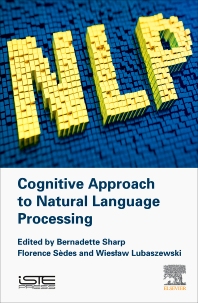Books in Natural language and computational linguistics
Books in Natural language and computational linguistics

Healthcare Applications of Neuro-Symbolic Artificial Intelligence
- 1st Edition
- Boris Galitsky
- English

Mastering Prompt Engineering
- 1st Edition
- Anand Nayyar + 2 more
- English

Artificial Intelligence for Healthcare Applications and Management
- 1st Edition
- Boris Galitsky + 1 more
- English

The Natural Language for Artificial Intelligence
- 1st Edition
- Dioneia Motta Monte-Serrat + 1 more
- English

Cognitive Approach to Natural Language Processing
- 1st Edition
- Bernadette Sharp + 2 more
- English

Quotient Space Based Problem Solving
- 1st Edition
- Ling Zhang + 1 more
- English

Encyclopedia of Language and Linguistics
- 2nd Edition
- Keith Brown
- English

Spoken Dialogue With Computers
- 1st Edition
- Renato De Mori
- English